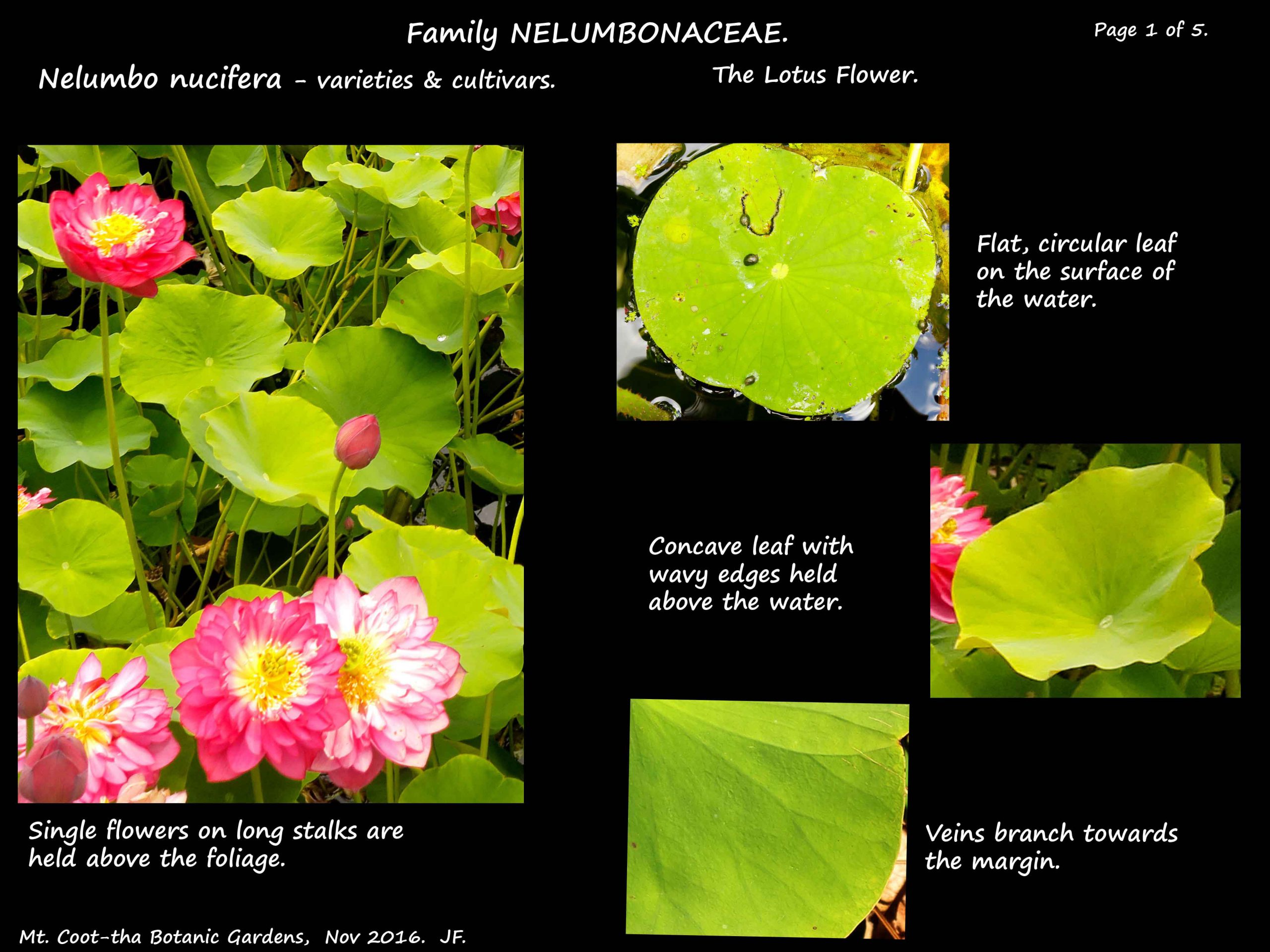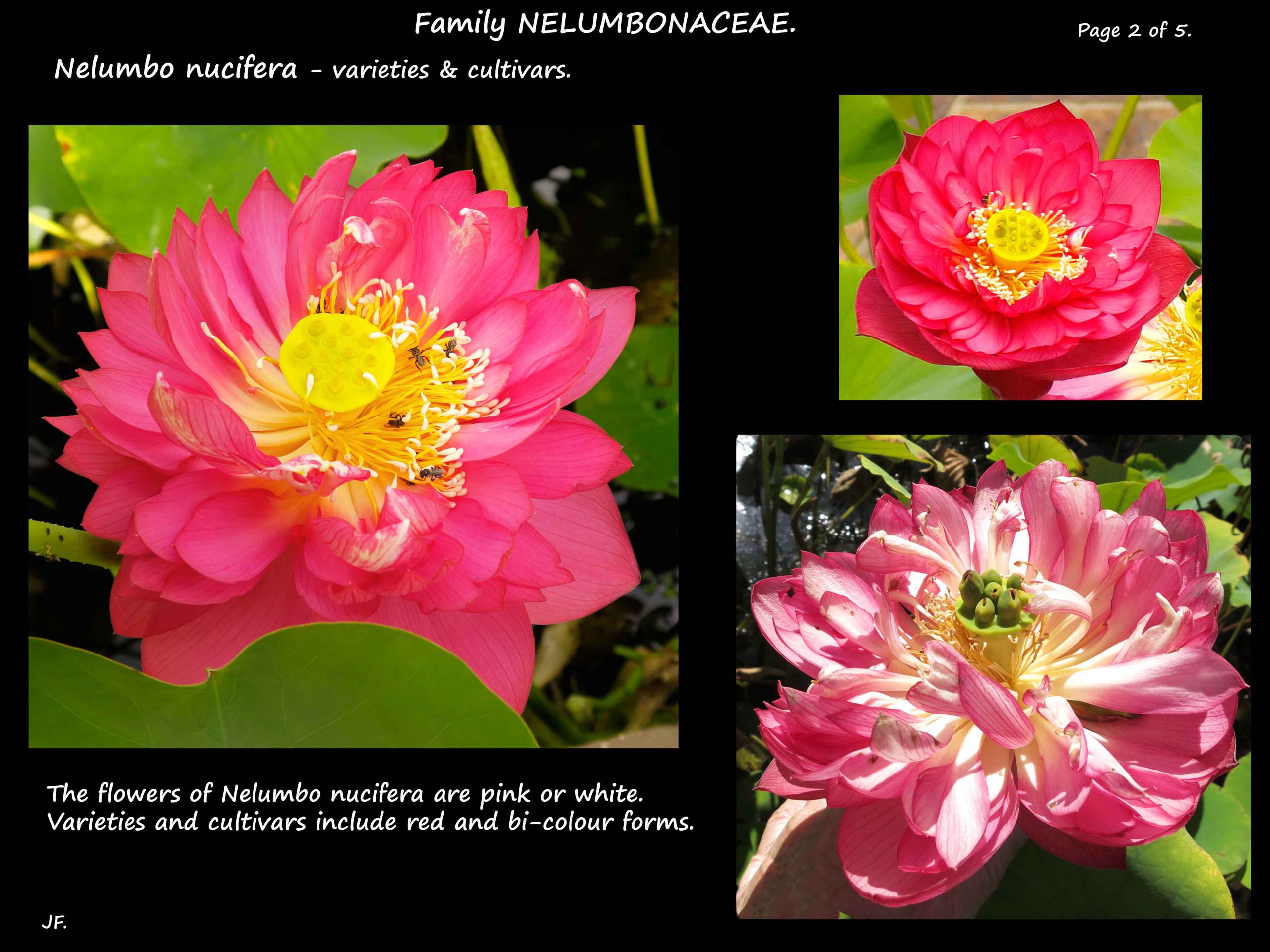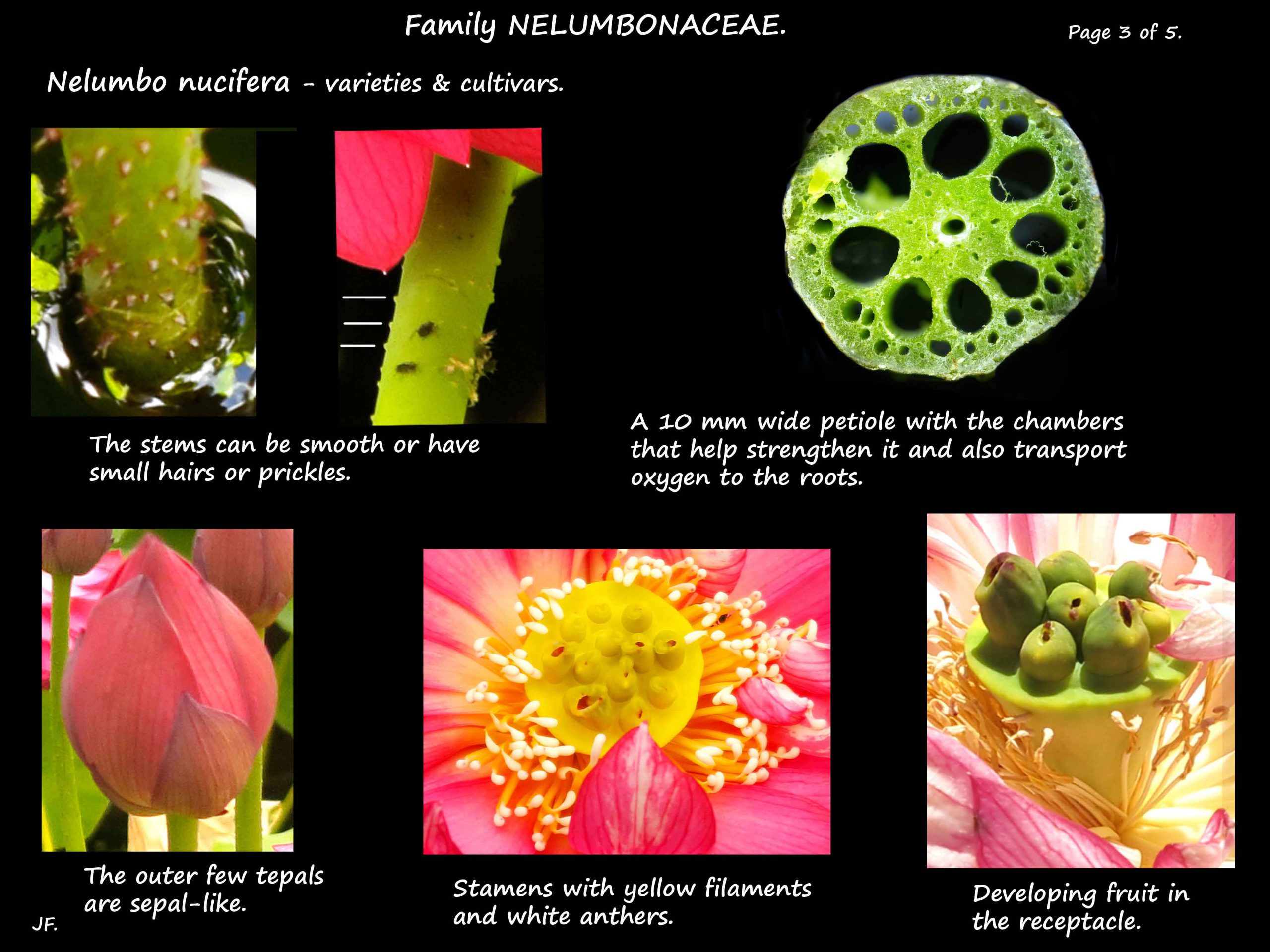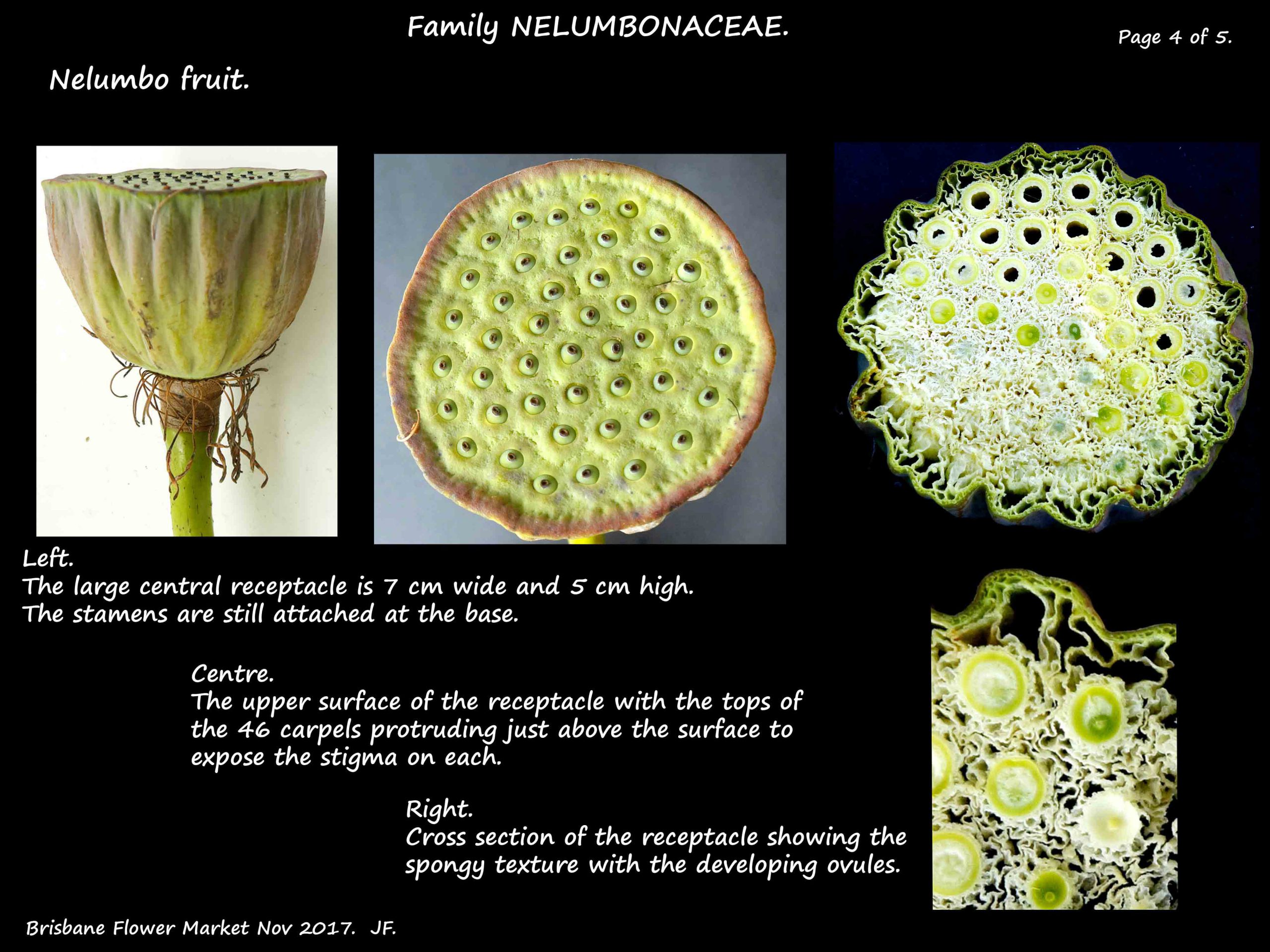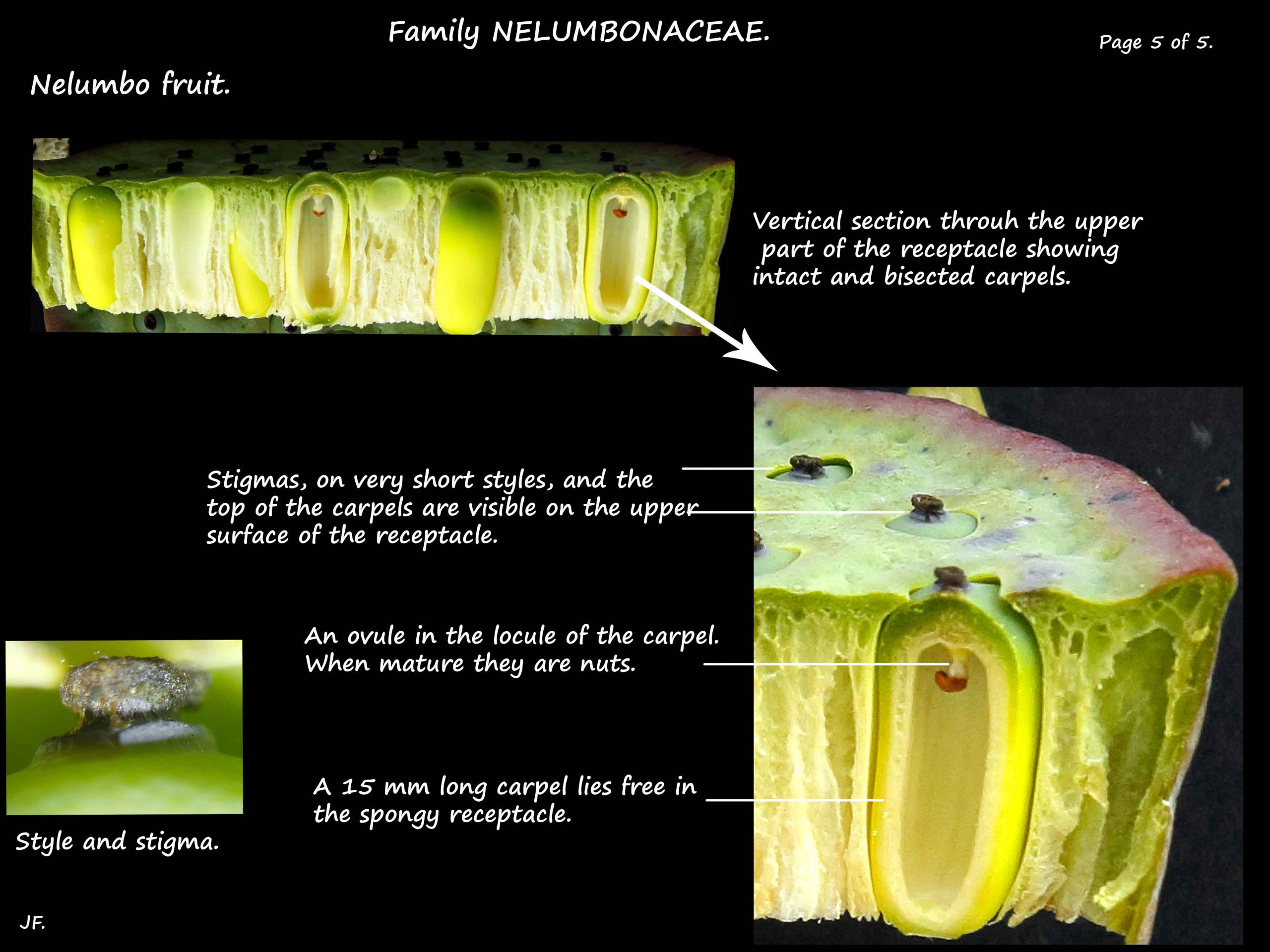Nelumbo nucifera
The Lotus flower is in Family Nelumbonaceae.
There are 2 native species of Nelumbo in northern Australia – N. nucifera and N. lutea.
They are sometimes called waterlilies because of their aquatic habit and appearance.
They used to be classified with the waterlilies in Nymphaeaceae but based on genetic
evidence they are now in the order Proteales.
Plants are anchored in the mud by thick root-like rhizomes which are actually the stems.
The rhizomes have tiny scale-like leaves and large foliage leaves.
Plants have a milky latex.
Foliage leaves are on stalks, up to 2 m long, arising from the axils of scale leaves.
The circular blade floats on the water or is held above it.
The concave blade, up to 1 m wide, has the stalk atttached to the centre (peltate).
They are mid green or can have a bluish tint.
The surface is water repellant due to microscopic hairs.
The edge is smooth and often wavy.
Veins radiate from the centre and fork near the edge.
Inflorescences are solitary flowers on long stalks arising from the scale leaf axils.
Flowers are up to 30 cm across and usually held above the leaves.
The perianth consists of 15 to 20 pink or white tepals in 3 series.
The outer few (2 – 4) are sepal-like and the rest, in 2 whorls are petal-like.
There are numerous stamens with thin, bright yellow filaments and white anthers.
There is an appendage, up to 8 mm long on the anthers involved in temperature regulation.
Flowers can keep their temperature within a narrow range irrespective of the environment.
The anthers open via longitudinal slits.
The receptacle, in the centre of the flower is an upward extention of the stalk.
It is yellow, 6 – 11 cm across and shaped like an upside down (obconical) cone.
The numerous (up to 40) carpels are embedded in its spongy interior.
Each carpel, with its terminal style and stigma, makes a small bump on the flat surface.
Each carpel has 1 ovule.
Mature seeds (nuts) lie free in the cavities of the now dry, brown and woody receptacle.
Seeds are released when the pod breaks off and falls into the water.
There are numerous varieties and cultivars including those with more petals and in
other colours such as yellow and red.
There are also bi-coloured ones especially white with pink tints.
J.F.
